Precision tires: details determine quality
Precision tires are tires with high precision, high performance and high reliability. They use advanced manufacturing technology and high-quality materials to provide excellent handling, stability and comfort. Precision tires are widely used in high-end cars, racing cars and special-purpose vehicles. Their characteristics include precise size control and excellent wear resistance. These characteristics enable precision tires to perform well in various road conditions and meet drivers’ ultimate pursuit of safety and driving experience.
This article introduces in detail the basic structure of tires, the characteristics of precision tires, material selection and performance analysis, manufacturing process, design points, and related issues such as precision tire technology progress and innovation.
1.Basic structure of tires
Tires are one of the important parts of automobiles, and their basic structure is crucial to the safety and performance of vehicles. The following is the basic structure of tires:
(1) Tread:
The part of the tire that is in direct contact with the ground, responsible for providing grip, drainage and wear resistance. The design of the tread pattern affects the performance of the tire, such as simple tread patterns for performance tires and dense tread patterns for winter tires to increase grip.
(2) Shoulder:
The part that connects the tread and the sidewall. It takes on some of the gripping function when the vehicle turns. Performance-oriented tires usually have special designs for the shoulder.
(3) Sidewall:
Located below the shoulder, it protects the tire body from external damage and provides a certain shock absorption function. Important information such as brand, size, and speed level are also printed on the sidewall.
(4) Bead:
The part where the tire connects to the rim. There is a steel wire inside to ensure that the tire is firmly fixed on the rim.
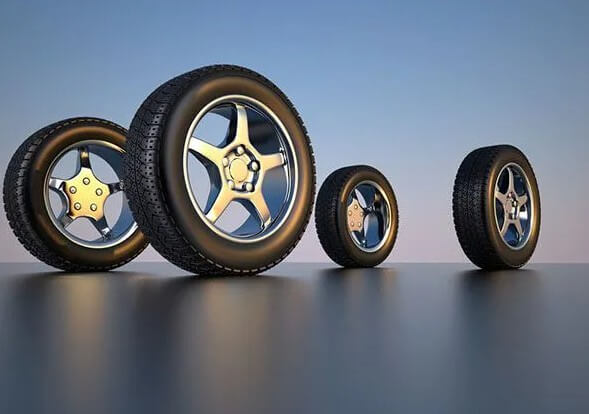
(5) Airtight layer:
In tubeless tires, the airtight layer is responsible for storing gas to ensure the airtightness of the tire.
(6) Cord layer:
The load-bearing structure inside the tire, mainly composed of multiple layers of rubber-coated cords, is responsible for bearing the internal air pressure of the tire and external impact.
(7) Steel belt layer:
Located above the cord layer, it provides the rigidity and anti-centrifugal force of the tire and determines the speed level and handling of the tire.
(8) Nylon cap layer:
It is located between the tread and the steel belt layer, fixing the steel belt layer and reducing its displacement inside the tire.
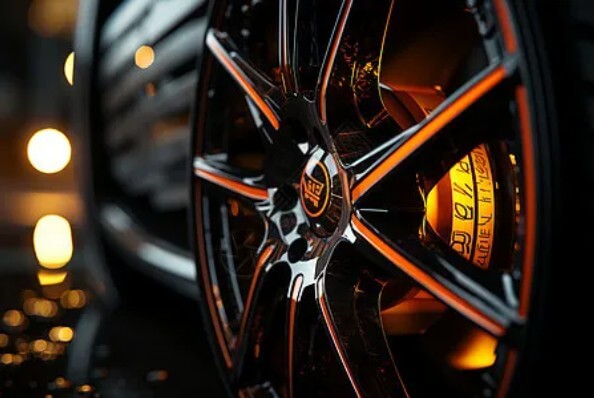
2.Characteristics of precision tires
(1) High-precision manufacturing:
Precision tires use high-precision technology during the manufacturing process to ensure that the size and shape errors of the tires are extremely small. This allows the tires to maintain stable performance when driving at high speeds and reduce vibration and noise caused by manufacturing errors.
(2) Excellent wear resistance:
The rubber formula and materials used in precision tires are carefully selected and have excellent wear resistance. This not only extends the service life of the tires, but also provides stable performance under various road conditions.
(3) Low rolling resistance:
Through optimized tread design and materials, precision tires can effectively reduce rolling resistance, thereby improving the fuel efficiency of the vehicle. This is especially important for vehicles that focus on energy conservation and environmental protection.
(4) Excellent grip:
The pattern design and rubber formula of precision tires enable them to have good grip on both dry and wet roads, ensuring the stability and safety of the vehicle during driving and braking.
(5) Comfort and quietness:
Using advanced shock absorption technology and materials, precision tires can effectively absorb and disperse vibrations during driving, providing a more comfortable riding experience. At the same time, the optimized tread design can also reduce noise during driving and improve the quietness of the car.
(6) High load-bearing capacity:
The structural design of precision tires enables them to withstand large loads and is suitable for various heavy vehicles and high-end models.
(7) Strong adaptability:
Precision tires can maintain good performance in a variety of climates and road conditions, providing a stable driving experience whether in hot summer or cold winter.
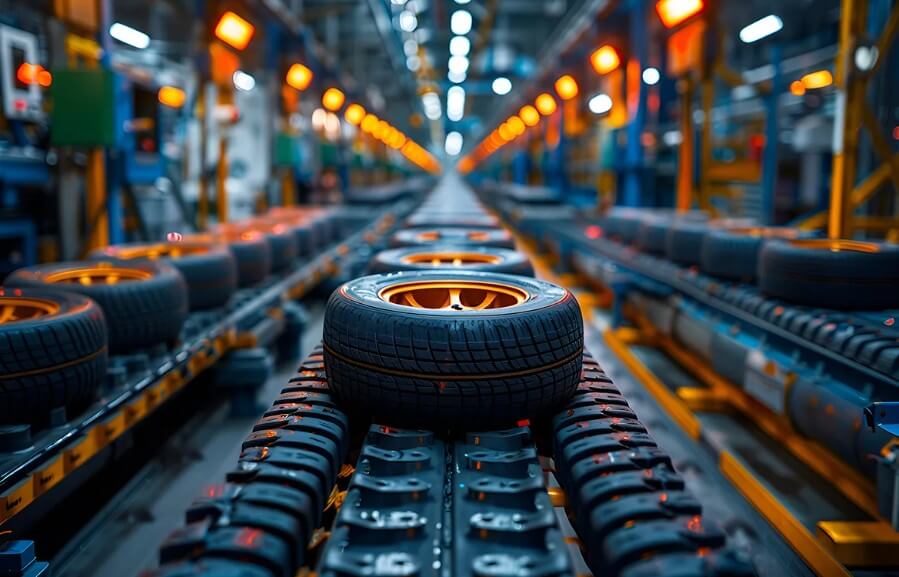
3.Precision tire material selection and performance analysis
Tire material selection and performance analysis are important links in tire design and manufacturing. The following is an overview of the types, characteristics and effects of precision tire materials on tire performance:
(1) Types and characteristics of tire materials
1) Natural rubber:
It has good elasticity and durability and is suitable for tires with high requirements for grip and ride comfort.
2) Synthetic rubber:
It has higher wear resistance and temperature resistance and is suitable for occasions with high requirements for tire durability and stability.
3) Silica:
Improve the wear resistance and durability of tires.
4) Aramid:
Used to strengthen the skeleton material of tires, improve the durability, cut resistance and impact resistance of tires.
5) Steel wire:
Increase the structural strength and wear resistance of tires.
6) Polyester:
Used as the material of tire cords and belts, enhance the strength and stability of tires.
7) Cotton nylon:
Used to enhance the strength and rigidity of tire structures.
8) Butyl/halogenated butyl:
Provide better cold resistance, wear resistance and crack resistance.
9) PA/IIR dynamic thermoplastic elastomer:
Improve the grip of tires, reduce fuel consumption and noise.
10) EPDM:
Used to manufacture the inner liner, sealing ring, waterproof strip, etc. of automobile tires, with good aging resistance and corrosion resistance.
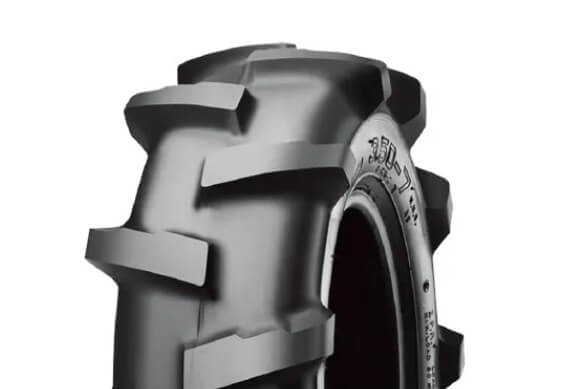
(2) The influence of materials on tire performance.
The type and characteristics of tire materials have a significant impact on tire performance. For example, natural rubber provides good elasticity and grip, while synthetic rubber focuses on wear resistance and temperature resistance. Reinforcements such as white carbon black and aramid can improve the durability and cut resistance of tires. Steel cord increases structural strength, while materials such as polyester and nylon are used to enhance the stability and stiffness of tires. Butyl rubber and halogenated butyl rubber provide cold resistance and wear resistance, while PA/IIR dynamic thermoplastic elastomers and EPDM are used to improve specific properties of tires, such as grip and aging resistance.
4.Manufacturing process of precision tires
(1) Raw material preparation:
The main raw materials of tires include rubber, carbon black, steel cord, etc. These materials are subject to strict quality inspection to ensure that they meet manufacturing requirements.
(2) Mixing:
Rubber is mixed with various compounding agents in an internal mixer to obtain a rubber compound with a certain plasticity and viscosity. Internal mixing is the basic link in tire manufacturing and has a vital impact on the performance of tires.
(3) Calendering:
The rubber compound after mixing is pressed into a film of a certain thickness and width by a calender, so as to prepare for the subsequent preparation of tire components.
(4) Cutting and bonding:
According to the design requirements, the calendered film is cut into components of various shapes and sizes, such as tread, sidewall, steel cord, etc. These components are then bonded in a certain order and position to form the prototype of the tire.
(5) Molding:
The bonded tire components are installed on the molding machine, and the components are combined into a complete tire blank through the action of the manipulator and the mold. This is a very critical step in the production of precision tires, which is directly related to the shape and size accuracy of the tire.
(6) Vulcanization:
The molded tire blank is placed in a vulcanizing tank, and a vulcanization reaction is carried out under high temperature and high pressure conditions to cross-link the rubber and form a finished tire with elasticity and strength. Vulcanization is an important link in the precision tire manufacturing process and has a decisive influence on the performance and quality of the tire.
(7) Inspection and packaging:
The vulcanized tires are strictly inspected for quality, including appearance inspection, size measurement, performance testing, etc.
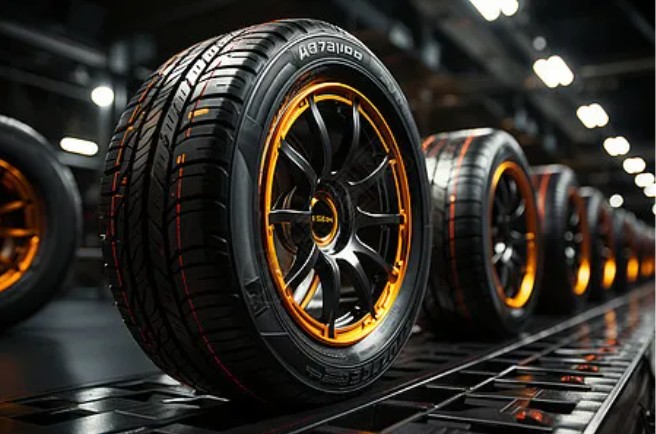
5.Key points in the design of precision tires
The design of precision tires is a complex and delicate process that requires comprehensive consideration of multiple key parameters to ensure the performance and safety of the tires. The following are several key parameters in tire design and special design requirements for high-speed tires.
(1) Key parameters in precision tire design
1) Tread pattern design:
The tread pattern directly affects the tire’s grip, drainage performance and noise level. Designers need to choose the appropriate pattern type based on the tire’s purpose (such as cars, trucks or engineering vehicles).
2) Carcass structure:
The carcass is the main supporting structure of the tire and is usually composed of multiple layers of cord. The strength and number of layers of the material determine the durability and deformation resistance of the carcass.
3) Sidewall design:
The sidewall protects the carcass from mechanical damage, but also needs to have a certain degree of flexibility to adapt to various road conditions. The design of the sidewall needs to balance strength and flexibility.
4) Size and proportion:
The size of the tire (including width, diameter and aspect ratio) needs to be selected according to the type and performance requirements of the vehicle. The appropriate size and proportion can ensure the compatibility of the tire with the vehicle.
5) Material selection:
The material of the tire (such as rubber, steel wire, cord, etc.) has an important impact on the performance and life of the tire. High-performance tires usually use special composite materials to improve performance.
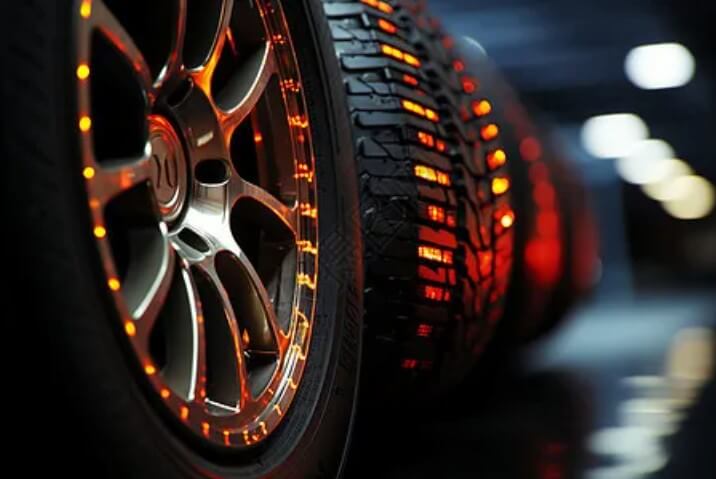
(2) Special design of high-speed tires
1) Low rolling resistance:
High-speed tires need to reduce rolling resistance to improve fuel efficiency and reduce energy consumption. Designers usually achieve this goal by optimizing tread materials and structures.
2) High thermal stability:
Under high-speed driving conditions, the tire will generate a lot of heat, so it needs to have good thermal stability. High-speed tires usually use high-temperature resistant materials and special structural designs to improve thermal stability.
3) High grip and handling:
In order to ensure stability and safety when driving at high speeds, high-speed tires need to have high grip and good handling performance. This is usually achieved through special tread patterns and materials.
4) Low noise:
When driving at high speed, tire noise will become more obvious. Therefore, high-speed tires need to reduce noise by optimizing tread patterns and structures.
6.Technological progress and innovation of precision tires
(1) Advances in material technology
The application of new materials in the production of precision tires not only improves the performance of tires, but also reduces the weight of tires, further improving the fuel efficiency of vehicles. For example, aramid fiber has the advantages of high strength, low elongation, and good heat resistance, and has become one of the important materials for high-performance tires. Glass fiber and polyester cord are also widely used in tire manufacturing. These new materials not only improve the performance of tires, but also reduce the weight of tires, further improving the fuel efficiency of vehicles.
(2) Pattern design and technological innovation
The pattern design of tires has a direct impact on tire performance. Using three-dimensional pattern CAD technology, designers can perform high-precision pattern simulation and optimization on computers, thereby improving tire traction and wetland performance. The development of radial tire technology enables tires to maintain good stability and low rolling resistance when driving at high speeds.
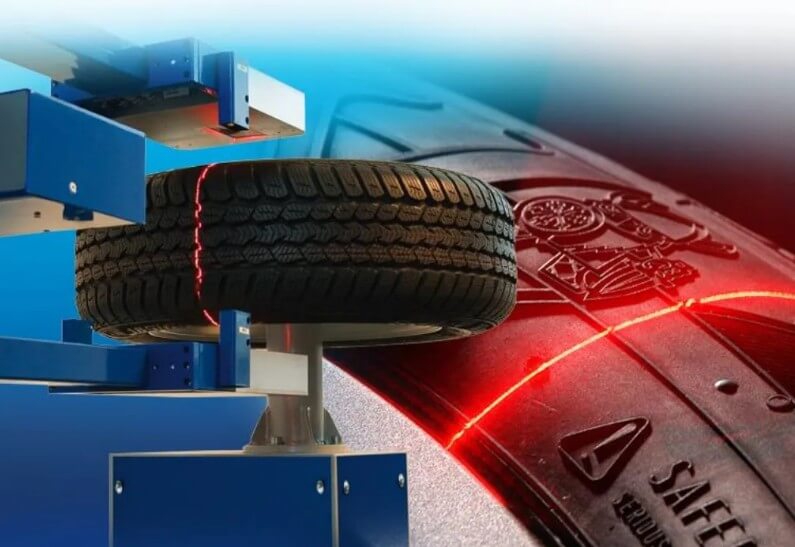
(3) Innovation of manufacturing process
Innovation of manufacturing process is the key to improving tire performance. For example, precision tire manufacturing widely uses CAD/CAM/CAE technology to convert tire pattern drawings into tire mold parameters, and complete the digitalization of tire mold pattern modeling and structural design. The manufacturing process is digitally programmed to generate NC programs, which are processed by CNC machine tools. The entire design and production process is completed completely through a series of high-precision technologies such as digital design, digital transmission, digital processing, digital inspection and management.
7.Summary
In summary, precision tires are becoming an important part of the modern automotive industry with their excellent performance, environmentally friendly design and intelligent potential. In the future, with the continuous advancement of science and technology, precision tires will surely play a more important role in improving vehicle safety, comfort and environmental protection.
